Your cart is currently empty!
Amra Farms Teak Cutting Boards Explained: Pricing, Quality, and What Makes Them Unique
A lot of people ask me why Amra Farms teak wood cutting boards are so expensive. In comparison to many other brands, Amra Farms teak wood chopping boards seem to be 3 or even 4 times more expensive and the size seems to be the same. This article explains why our teak wood cutting boards are more expensive and why we are unique too.
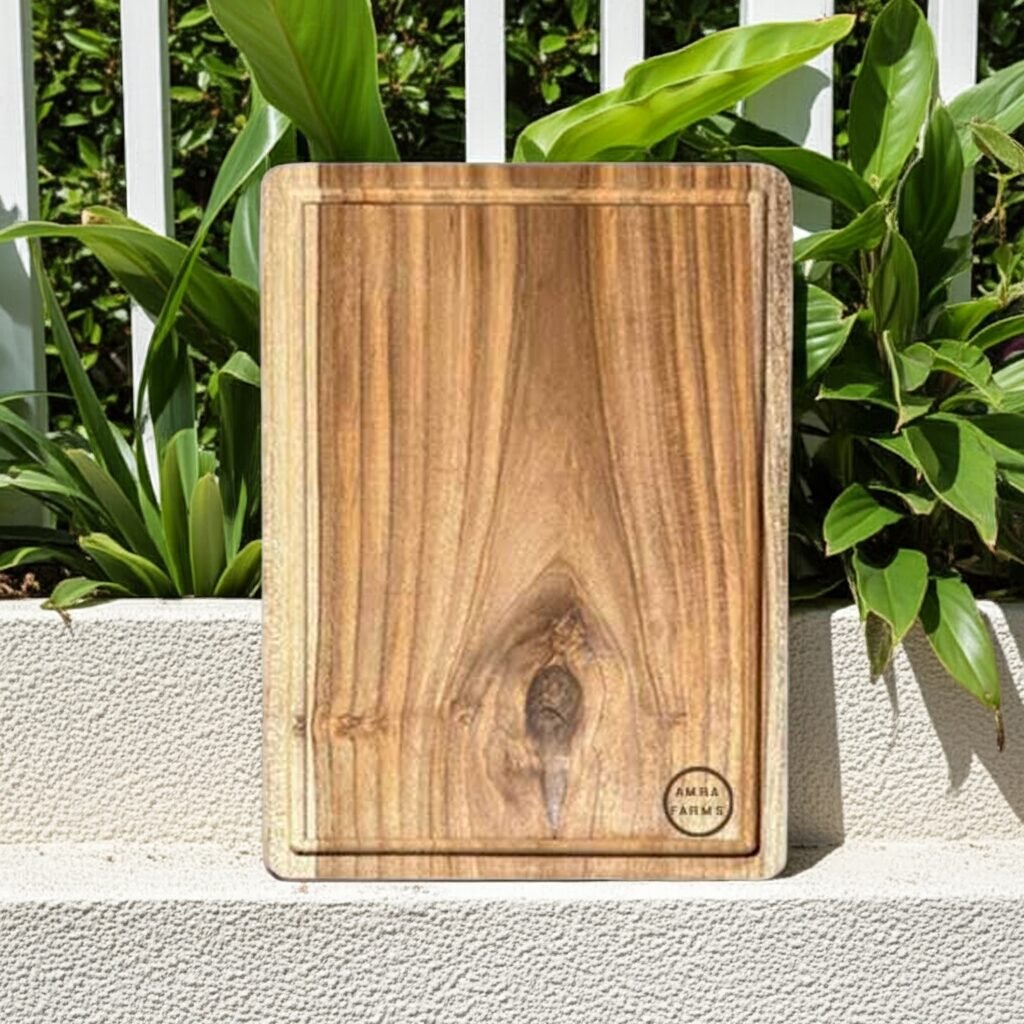

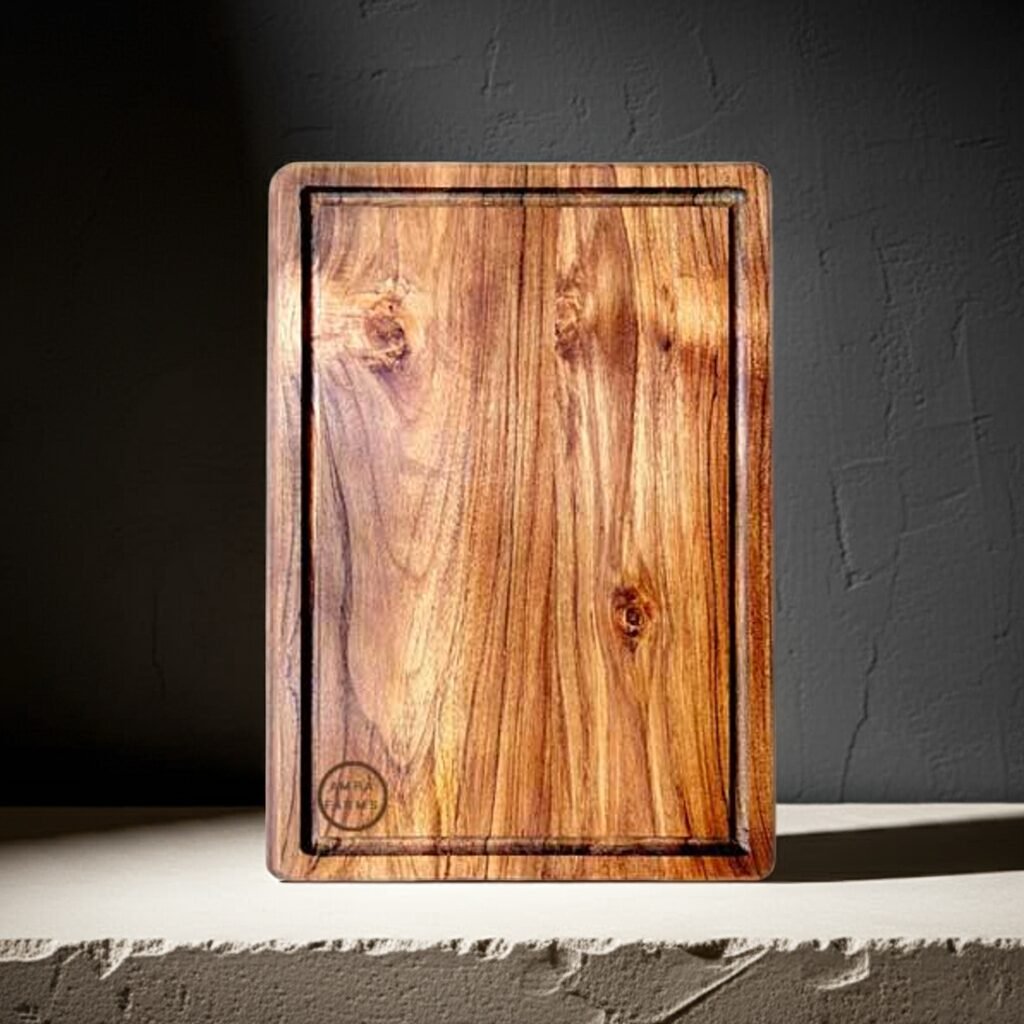
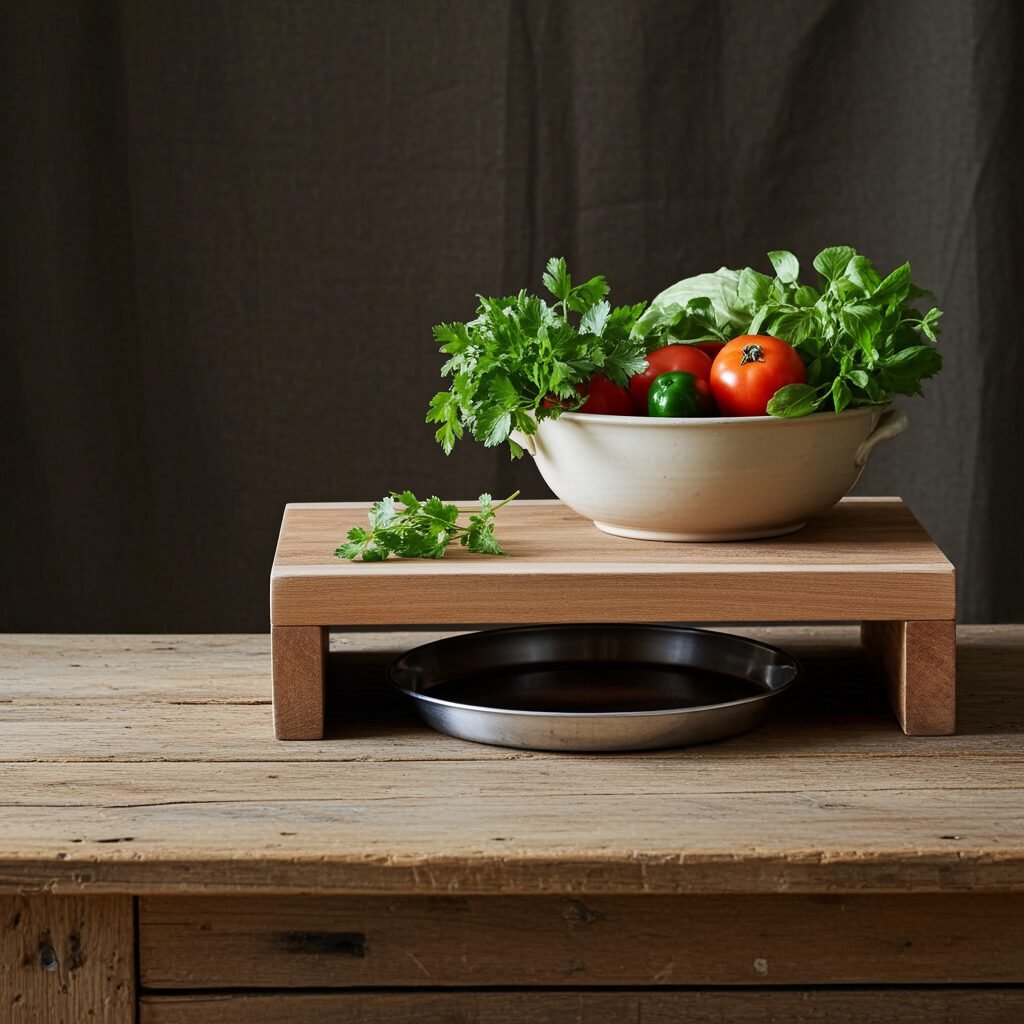
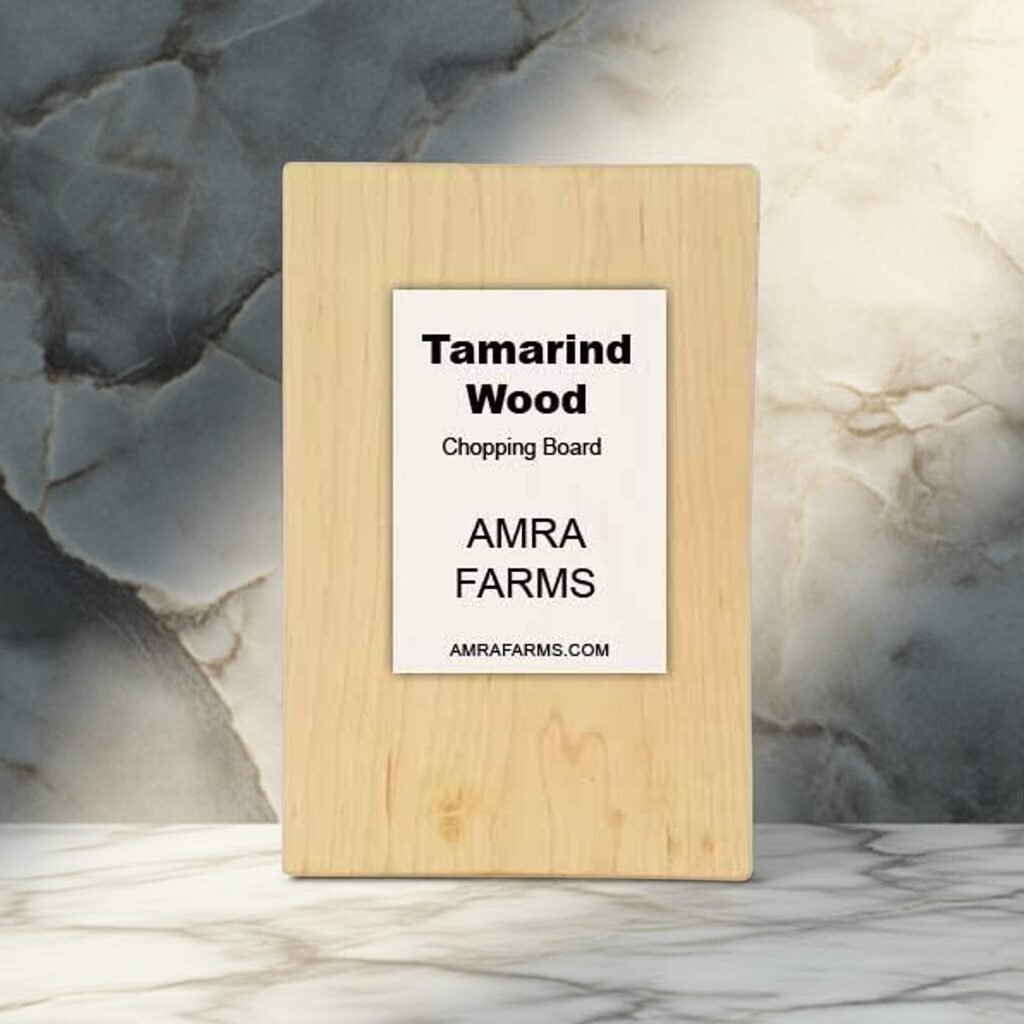

Before we begin comparing prices, let me put out a few facts. This will help you understand the pricing of teak wood cutting boards in general and what is sold in the market. To begin with, there aren’t a lot of Teak wood “Single Block” cutting boards in the market that are more than 9 inches wide. Amra Farms takes pride in the fact that we provide 8 inch, 10 inch and 12 inch single block cutting boards at the best price. But then is it the best price?
Understanding Teak wood cutting boards and its pricing
Teak wood cutting boards in the market are usually not single block. Almost all teak wood cutting boards, spare a few, are joint wood cutting boards made from teak. But as if that is not enough, most of the joint wood boards are made from Grade B or even Grade C teak. Understanding teak wood boards is all about understanding the wood source, the age of the tree and the grade.
Understanding Teak wood
Wood grading is a complex topic and requires understanding everything from quality, age, source and more. Teak wood is in general expensive, but if you look around you will find teak wood for 1000 Rs per cubic feet and another source selling it for 12500 per cubic feet. What’s the difference and why the huge difference?
Age of the tree: A teak wood tree grows very slow. A tree which is 40 inches in circumference takes roughly 35-40 years to get there. During the time of growth, some trees (approximately 75% of them) are affected by stem rot, diseases and defects, due to which the wood is not graded to be the best. Approximately 30% of the wood which is not graded the best falls in Grade B category. These are often woods with knots and have a higher sapwood percentage than that of Grade A wood. The remaining wood is usually cut down due to poor quality and used where allowed.
Take into consideration a few factors. A teak wood tree which is cut down after 40 years is 40 years of effort and has approximately 8 to 10 cubic feet of wood or less than 10% of the wood which is more than 12 inches wide. Less than 30% of the wood is more than 10 inches wide. While it’s easier to acquire wood which is 8 inches, it’s rare to find wood which is 12 inches wide.
There is an increased demand for wood which is wider. There is limited quantity of teak wood which is 12 inches thick. The teak wood you acquire which is 12 inches wide comes from a tree which is 40, 50 or even 100 years old. That is valuable.
Why is the teak wood sold cheap then?
Age of the wood is the primary factor in teak wood pricing. Smaller wood means shorter age. A teak wood which is 0-12 years old will have a circumference of 10-15 inches. When cut, the largest planks are 4-5 inches wide. This wood is usually cheap because it is not dense and also the age of the wood is very less. These woods tend to decay faster than wood which is older and dense.
Now look at a wooden chopping board sold in the market today. Most of them will sell a board which is joint and each of the planks joint together are not more than 3-4 inches wide.
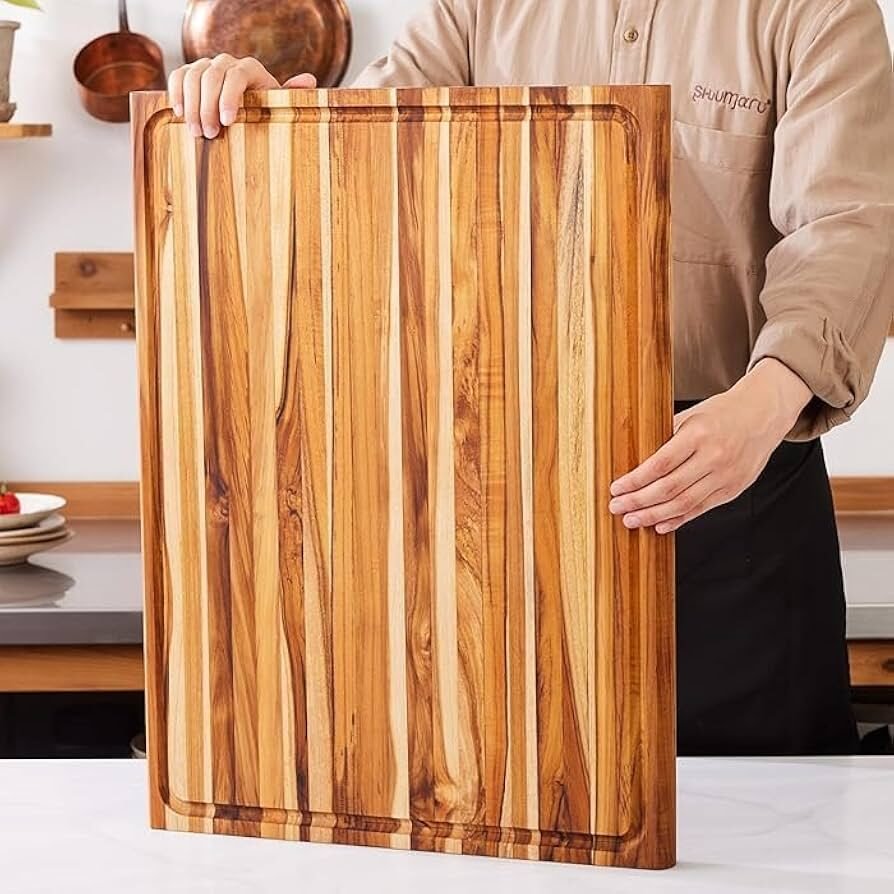
A Grade C Teak With more than 90% Sapwood. You can see that the wood has more white areas than dark hardwood.
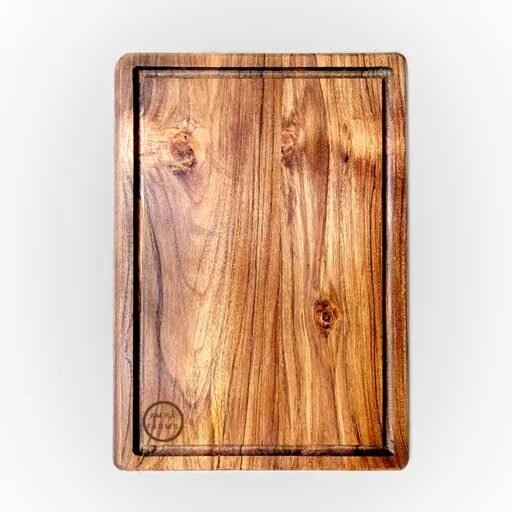
Grade B teak with 100% Heartwood and no sapwood at all. The wood has knots in them which makes it a Grade B teak wood.
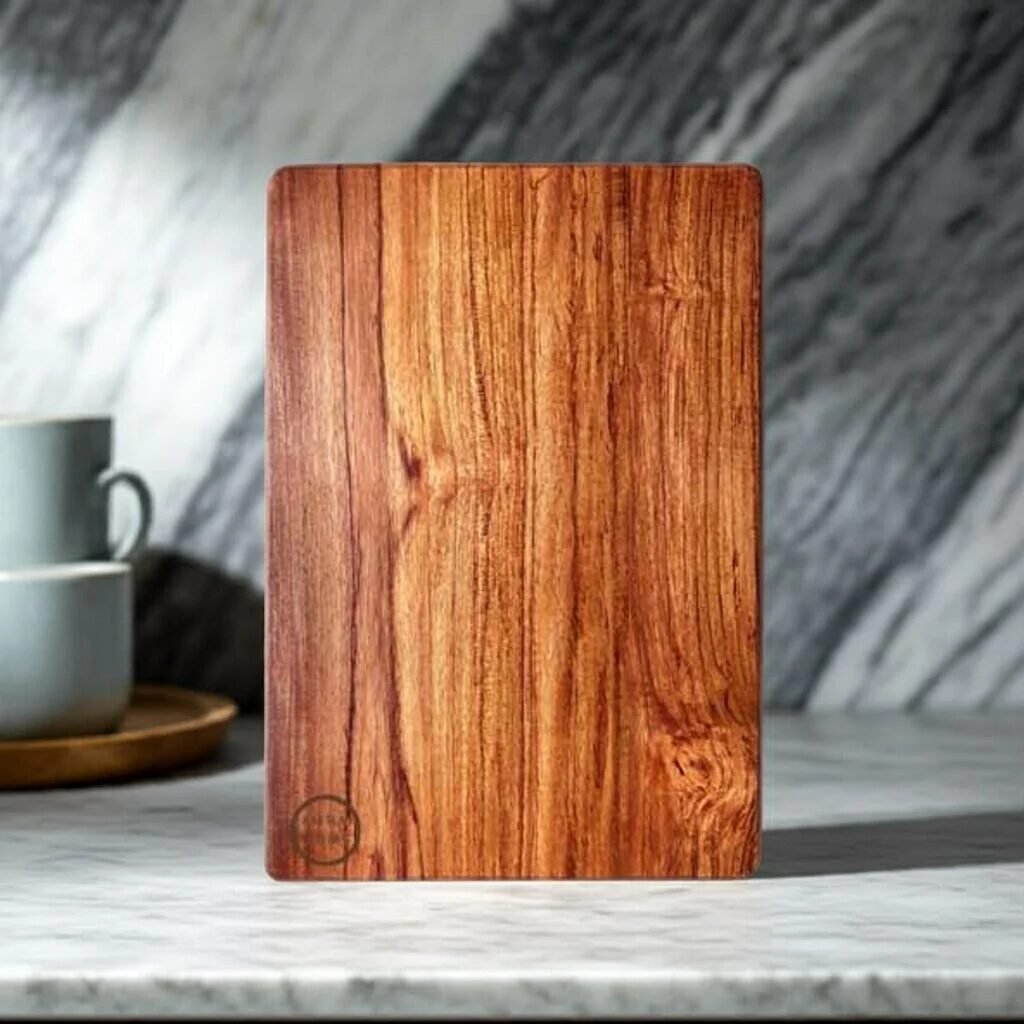
Grade A tea with no knots straight grain and a single block of wood which is 12 inches wide.
The second most important factor is grade
A Grade A teak is high quality dense heartwood, with rich mineral oil and few knots and even color. These woods could range anywhere between 4500 – 9000 Rs per cubic feet. Grade B teak is medium quality, lighter color, more knots and there is a lot of grain variations. Since the age of the tree is lesser, there is relatively lesser oil content. These are woods best used for interiors and indoor furniture. They are moderately priced between 2000-5000 Rs per cubic feet depending on location and where it is sourced from. Malabar teak is often more expensive than Valsadi teak because of the high oil content. Even a Grade B teak will be as expensive as a Grade A Valsadi teak in most cases. Grade C teak is what is usually used in joint wood cutting boards. They are lower quality and contain more sapwood, have lesser natural oil content and the color is uneven. Some furniture users use Grade C teak to sell cheap furniture made from teak by masking them with paint and varnish. This is also the same wood used in most joint wood cutting boards today. The price? Less than 2000 Rs per cubic feet and it could go as low as 600 Rs per cubic feet.
The grade of teak wood plays a major role in the durability of your wooden cutting boards too. Grade A teak will last 40 or even 50 years. Some cutting boards made from Grade A teak last up to 80 years with proper care and regular resurfacing. A Grade B teak is less dense and the life of the board will go down by 50%. Expect your cutting board to last 10-20 years. And a Grade C teak wood will last not more than 10 years. Most joint wood boards will last 5 years tops before it splits, cracks and breaks down.
So next time you choose a teak wood cutting board look for the width of the plank. Joint wood boards are not bad. Ensure the wood has more heartwood than sapwood. The colors should be even and you should see lesser white and more brown and golden hues on your board.
For the best quality board, choose something which is single block. These are the best boards. It does not matter what size. Ensure the thickness is at least 1 inch and is made from a single block of wood.
Categories
Products
- Buy Wooden Vegetable Cutting Boards Online
- Wooden Kitchen Accessories Tools
- Buy Butcher Block & Meat Cutting Boards Online
- Buy Premium Edge Grain Single Block Wooden Chopping Boards Online
- Buy The Best Teak Wood Chopping Boards Online In India
- Buy Wooden Cutting Boards With Handle For Kitchen
- Mango Wood Chopping Boards
- Single Block Chopping Boards
- Tamarind Wood Chopping Boards
- Wooden Platter Boards , Pizza Platters & Charcuterie Boards
Tamarind Wood Cutting Board Teak Wood Cutting board
